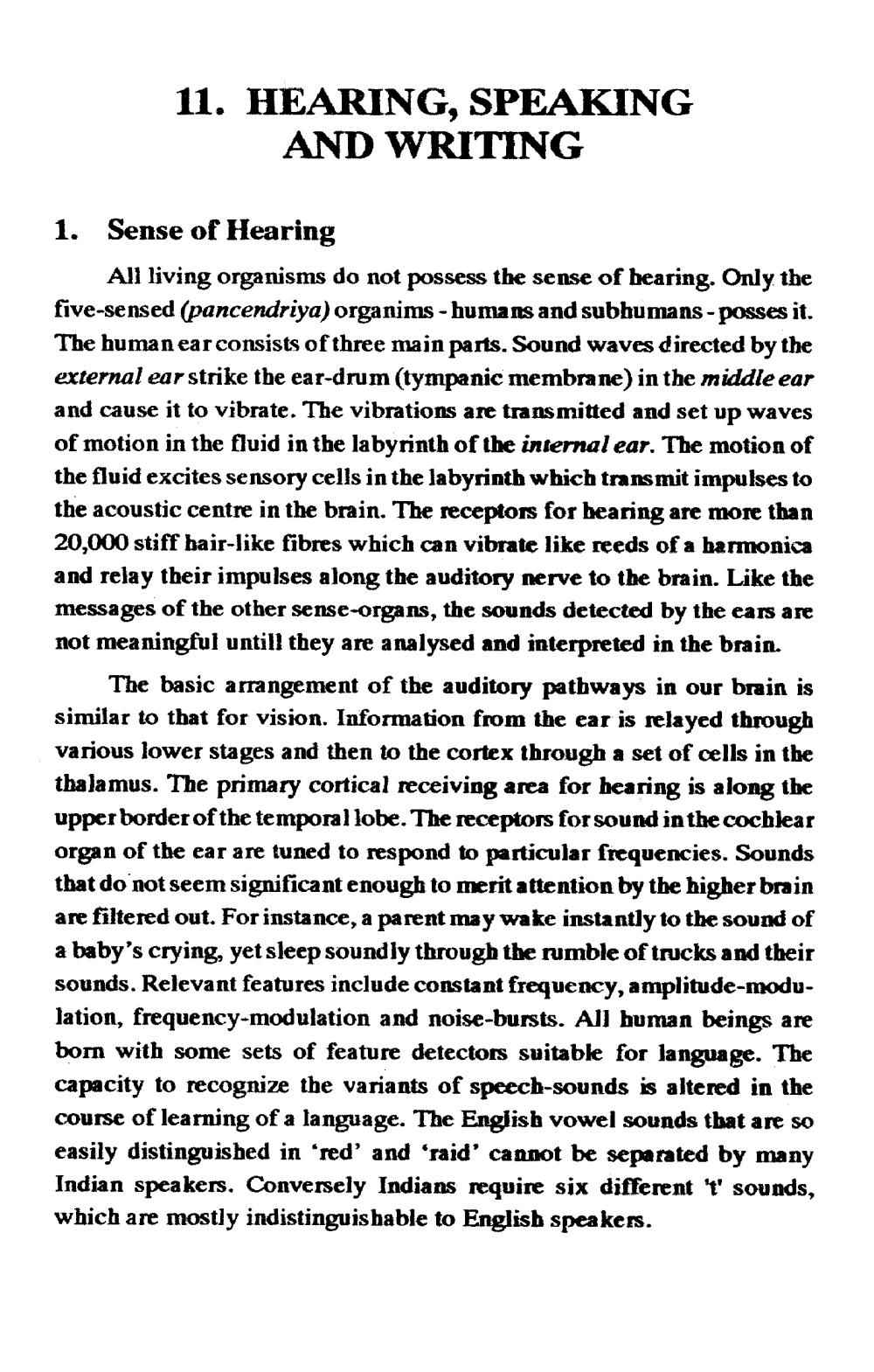________________
11. HEARING, SPEAKING AND WRITING
1. Sense of Hearing
All living organisms do not possess the sense of hearing. Only the five-sensed (pancendriya) organims - humans and subhumans - posses it. The human ear consists of three main parts. Sound waves directed by the external ear strike the ear-drum (tympanic membrane) in the middle ear and cause it to vibrate. The vibrations are transmitted and set up waves of motion in the fluid in the labyrinth of the internal ear. The motion of the fluid excites sensory cells in the labyrinth which transmit impulses to the acoustic centre in the brain. The receptors for hearing are more than 20,000 stiff hair-like fibres which can vibrate like reeds of a barmonica and relay their impulses along the auditory nerve to the brain. Like the messages of the other sense-organs, the sounds detected by the ears are not meaningful untill they are analysed and interpreted in the brain.
The basic arrangement of the auditory pathways in our brain is similar to that for vision. Information from the ear is relayed through various lower stages and then to the cortex through a set of cells in the thalamus. The primary cortical receiving area for hearing is along the upper border of the temporal lobe. The receptors for sound in the cochlear organ of the ear are tuned to respond to particular frequencies. Sounds that do not seem significant enough to merit attention by the higher brain are filtered out. For instance, a parent may wake instantly to the sound of a baby's crying, yet sleep soundly through the rumble of trucks and their sounds. Relevant features include constant frequency, amplitude-modulation, frequency-modulation and noise-bursts. All human beings are born with some sets of feature detectors suitable for language. The capacity to recognize the variants of speech-sounds is altered in the course of learning of a language. The English vowel sounds that are so easily distinguished in 'red' and 'raid' cannot be separated by many Indian speakers. Conversely Indians require six different 't' sounds, which are mostly indistinguishable to English speakers.




